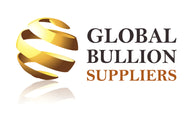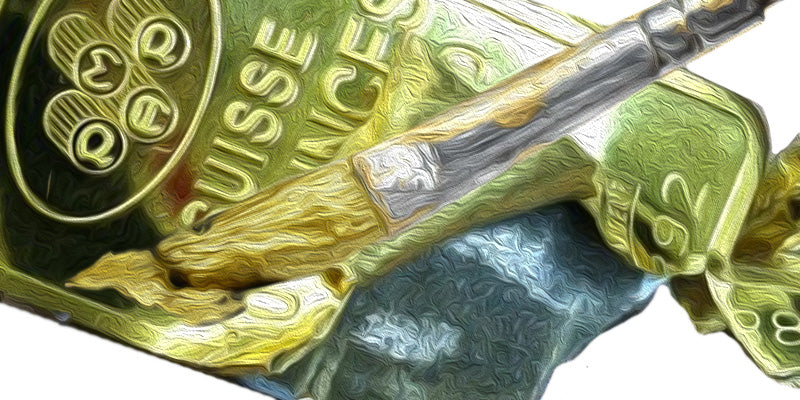Author Sebastian Wieschowski and How to Tell if Bullion is Real
If you work in any field long enough, you'll come across scammers and schemers that will try to swindle their way to riches. Bullion is no different. So let's talk about how to tell if bullion real real.
In this Q&A we wanted to learn more than just how to tell if bullion is real. We wanted to learn, from an expert, about the scourge of bullion fraud. We wanted to learn what you can do to identify authentic bullion.
Sebastian Wieschowski, based in Hanover, Germany, is the author of Fake Coin Bible: How to Protect Yourself Against Counterfeiters.
He has spent years working with coin and bullion collectors to help identify valuable collectibles. From gold coins and silver bars to the world of numismatic, Sebastian is your guy. Sebastian is also an expert on coin fraud, a topic that is increasingly of interest to coin collectors around the world. So let's go beyond learning how to use an acid test and get to the roots of the issue.
GBS: What is your experience in studying bullion and issues related to bullion?
Wieschowski: I have been working as an author in the field of bullion since 2007 because this is actually one of the few growing collection areas in German numismatics. I always refer to bullion as the "gateway drug" for new collectors because they start with standard bullion silver coins and explore the exciting world of numismatics from that starting point.
And it is actually the perfect first step because you don't risk a lot of money when buying a silver ounce at spot price.
GBS: What is the main issue with fake bullion circulating globally?
Wieschowski: Fake bullion is actually the most dangerous form of counterfeiting nowadays. The fake version of Kookaburra, Koala or Panda coins are created in mass production and designed very close to the original pieces. It is very hard for newbies to detect those counterfeits because the details on the fake coin look nearly as clear and sharp as in the original version.
And those "bad" Pandas and Koalas and Kookaburras are sold at a fraction of the silver spot price on platforms on AliExpress. So it is a very easy moneymaking scheme. And I have the impression that people don't take a closer look at items valued at around 20 euros a piece.
GBS: Is this a growing problem or something that has stayed steady for years?
Wieschowski: It is definitely a growing problem since one or two years with the advent of Chinese marketplaces that sell practically everything that can be counterfeited. You receive huge discounts when buying the fake coins in dozens or hundreds. And you receive free first-class shipping. The pieces arrive at your place within a week, so there is always new material for fraudsters right after they sell out.
GBS: What can someone look for if they have a bullion they are unsure if it's authentic?
Wieschowski: First of all, you should pay close attention to the details and always have a photo of a genuine coin at hand or on your digital device using Google or the website of your local bullion dealer. Most counterfeits have slightly exaggerated or disproportionate detail; certain areas of the coin have a "cartoonish" appeal. For example, if you take a look at a Canadian Bullion coin depicting a Bison, the blades of grasses on the meadow look much more realistic when minted by the Royal Canadian Mint. The Asian fraudsters did not use the time to imitate each piece of grass, so this is a good way to detect a counterfeit coin.
And you should always have a magnet at hand. While a pure silver coin is not attracted by a magnet, most counterfeit bullion coins contain magnetic metals such as iron or nickel.
GBS: How is learning how to tell is bullion is real different than, say, coins or other collectibles?
Wieschowski: It is actually much harder, because the fraudsters have to put more efforts in imitating the modern details and anti-counterfeit features. When imitating an old coin, you don't stumble upon the raw overall appearance of a fake coin, because old coins just look like this.
In conclusion, what advice would you give someone looking to buy gold bullion but unsure where to start, and unsure if they are being scammed or not from buyers online?
Wieschowski: It is sad but true to say that the best anti-scam strategy would be that people should take a minute to activate their brain cells. Most silver bullion fake coins are being sold in Germany at prices just below melt value...
But just ask yourself: Which serious dealer sells silver below the actual silver value?
People are striving for bar gains and want to save a buck a coin, but in the end they lose $15. And many people do not detect the counterfeits in their vault until years later, when they want to resell their stuff. This is a very dangerous situation. The fact is that the modern bullion market is a very easy environment even for casual fraudsters.
So I would strongly advise that people should stick to their local bullion dealer and invest some cents extra. This tiny premium is a very good price for the assurance of receiving real silver for your money.

